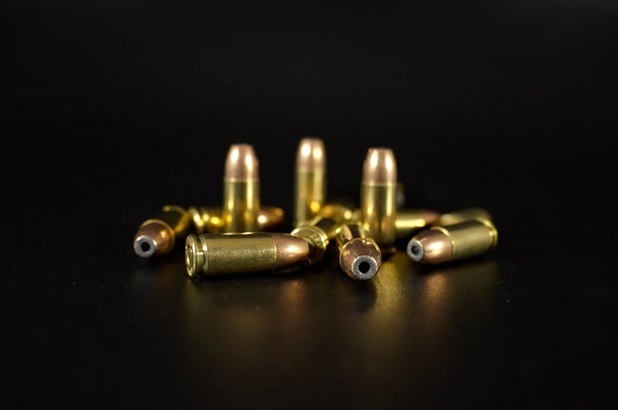Bullets are measured in grains, which is a somewhat rare unit of weight measurement that’s only reserved for things that weigh a very small amount.
With that said, the weight of the bullet you choose will impact several important things, among them suitability for hunting, defensive applications, and also the reliability of the action.
Here’s what you need to know.
How It Impacts Hunting Ammo
If you hold the cartridge and bullet type steady, the only thing you can change is bullet weight.
Therefore, two soft point .308 Winchester bullets can realistically only vary in terms of weight.
Both will perform similarly with respect to ballistics, but the heavier bullet will produce a higher muzzle energy (assuming the powder charge and barrel length are held constant), more recoil, and it will also experience drop at a faster rate than a lighter bullet.
But this also means that the bullet will carry more terminal energy, which means it will penetrate better and deliver more stopping power to the target.
This is not to suggest that heavier bullets are better across the board. If you’re dispatching prairie dogs, you probably only care that the bullet is accurate and flat-shooting.
But if you need the extra stopping power to ethically bring down an elk or a bear, then a bullet in a heavier weight may sometimes be the better option among several.
And Defensive Applications
Bullet weight carries the same implications in defensive ammo that it does with hunting. Specifically, the heavier the bullet weight, assuming all other factors are constant, the more energy it will deliver, producing more stopping power.
Take two 9mm rounds for instance: Speer Gold Dot 115gr JHP and its 124gr JHP.
Both of these are loaded with hollow point bullets. They have slightly different load data, but for all intents and purposes the real difference between these rounds is the bullet weight. They’re even manufactured by the same company.
Yet, performance is not the same. Per Speer itself, the muzzle energy of the lighter round is 374 ft-lbs, and the muzzle energy produced by the latter is 405 ft-lbs.
You don’t need to be a scientist to recognize that the heavier bullet hits harder than the lighter bullet, ignoring other load data like muzzle velocity (which is, in fact, a factor here).
This means that all else being equal, you’re likely to get better penetration from the 124gr Gold Dot than you’ll get with the 115 grain version, and you’ll definitely get better stopping power from the heavier one.
The heavier one will kick more, but when this is a matter of life and limb being in jeopardy, oftentimes the heavier bullet will offer better performance.
And Firearm Reliability
There’s one more thing to consider here with respect to bullet weight, and it’s the reliability of the firearm - at least, if we’re considering autoloaders such as popular recoil-operated semi-automatics.
Most semi-automatic handguns are, for instance, recoil operated, which means that muzzle energy is a primary determinant of how well the action will cycle. Remember now that muzzle energy is a product of bullet weight and velocity.
Which means, holding velocity steady, you need a heavier bullet to cycle the action reliably. This is the reason that some subsonic ammo does not perform reliably in some semi-auto actions.
If your action is recoil-operated, and it’s struggling a bit, consider one of two things: up the bullet weight or up the muzzle velocity, or better, both.
Other Considerations
When you’re looking at Speed Gold Dot, Federal HST, or other ammo and comparing bullet weights, you should also consider the following.

● Bullet type
Bullet type is, on the whole, more important than bullet weight. Take two 9mm Luger rounds - the one with a hollow point will drop more energy into its target more efficiently than a heavier one that has a full metal jacket. This is the reason that hollow point ammo like Federal HST is preferred for defensive applications.
● Muzzle velocity and energy (products of bullet weight and propellant)
It is not only bullet weight, but the type and amount of propellant used, that determine muzzle energy, which is part of what determines how hard a bullet will impact its target. Muzzle energy is the best thing to look at because it accounts for bullet weight and propellant. The higher the muzzle energy, the harder it hits - but again, you need to consider the design of the bullet type.
● Action type
In this article we mentioned that some action types struggle with lighter bullets and subsonic ammo. This is only true for semi-automatic actions. Single shot actions and repeaters, such as lever guns, bolt-action guns and pump guns require manual manipulation of the action and therefore bullet weight and muzzle velocity will not impact performance.
● Intended purpose
Consider also what you will be using this ammo for. Is it for hunting? Personal defense? Competition? Or will you simply be plinking? All of these things will help indicate whether a specific round, with regards to bullet type, weight, and energy, is suitable for the given application.
Stop Here for Speer Gold Dot, Federal HST and Other Ammo
Regardless of what you’re looking for, we carry a wide range of 9mm bulk ammo for defensive and sporting applications, as well as for training and plinking. Take a look through our collection of Speer Gold Dot, Federal HST, Remington, and Winchester ammo and stock up today.

